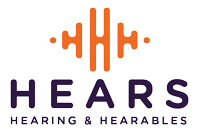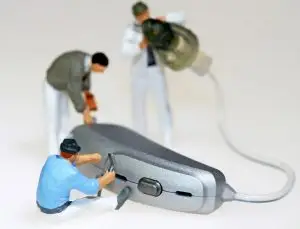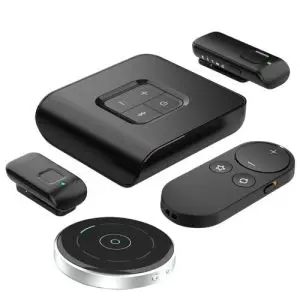A randomized controlled clinical trial to assess the benefits of a telecare tool delivered prior to the initial hearing assessment.
Authors: DW Maidment, E Heffernan and MA Ferguson
International Journal of Audiology Published online: April 18, 2022
We probably all know someone who could benefit from the use of hearing aids.
It can be a difficult topic to discuss. Some who need them do not “hear” about it. Why? The reasons are as varied as the person. Some believe it will make them look and/or feel old, or they think they are too expensive, still others believe their hearing loss is minor and no treatment is required. For these patients, moving away from a paternalistic mode of care, making it a collaboration between patient and provider is more successful.
However, despite the success of this type of approach, patient-centered communication rarely occurs in audiology appointments.
To address this, the Ida Institute developed an online Telecare platform to help people living with hearing loss better prepare for their audiology appointments. One of the included tools is “Why Improve my Hearing?” (WIMH) which aims to promote readiness to address hearing loss and hearing aid self-efficacy before the first appointment. Studies have shown that first-time hearing aids users who used the motivation tools at the initial assessment appointment reported greater self-efficacy (refers to one’s belief in the ability to execute a particular course of action.), reduced anxiety levels, and higher levels of shared decision-making. The purpose of this study was to examine the benefits of the WIMH (why improve my hearing) Tool in adults with hearing loss who have not yet received hearing healthcare.
Study participants were recruited via Adult Audiology Services at two hospitals in the UK.
All participants in the study were adults with a good understand of English who had not previously worn hearing aids. Exclusion criteria included those unable to access the internet and email or unable to complete questionnaires due to age-related problems (including cognitive decline or dementia). Of 461 individuals assessed for eligibility, 57 were eligible and willing to participate. These were randomly assigned to one of two groups: the intervention group received the WIMH (why improve my hearing) Tool plus standard clinical care, while the control group received standard clinical care only.
Overall, the study found that when used prior to a hearing assessment appointment, the Why Improve My Hearing Tool did not improve hearing aids self-efficacy, or hearing aid outcomes up to 10-weeks post-fitting.
The study authors posit several reasons why this study did not show improved outcomes, while others studies have. First of all this study did have a relatively small sample size. Previous studies also used three separate tools; not just the WIMH Tool. Also, all the study participants had the necessary skills and knowledge to use digital technologies, given that this was a prerequisite to taking part in the trial.
Other studies have shown that greater digital competency in first-time hearing aid users predicts superior practical hearing aids handling skills, which may arise due to greater self-efficacy.
Despite the fact that the study did not find a positive improvement in self-efficacy, the Tool does appear to have the potential to improve patient readiness. Meaning it can help patients who are ambivalent or reluctant to accept that they have hearing difficulties that require intervention and/or present with lower readiness to change. For anyone who has tried to get a friend or family member to seek audiological assistance, this could be a great help.
If you have any questions or would like to read the full article, please contact us at Hears Hearing & Hearables or our audiology clinic in Minnesota.
See you in a telehealth meeting!
Karen






